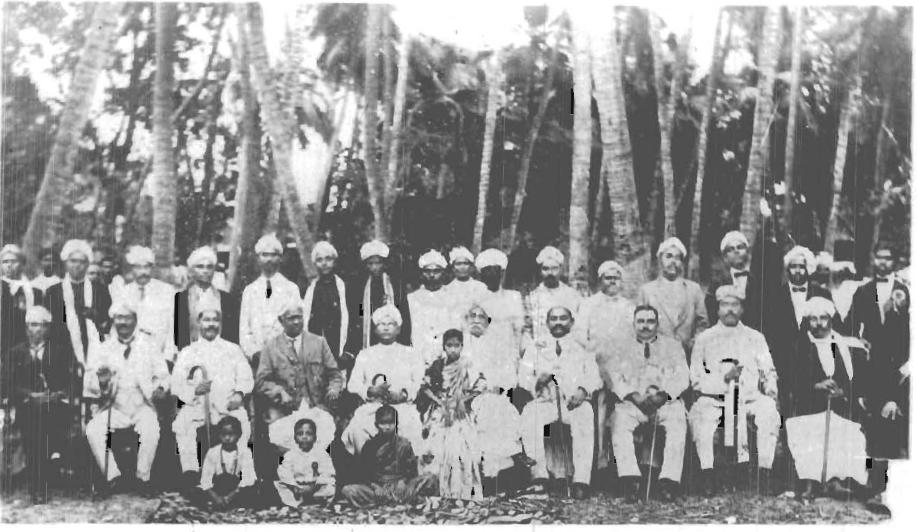1. Non-cooperation aroused enthusiasm and high hopes. Its abrupt suspension was not appreciated by nationalists like Motilal Nehru and C. R. Das.
In contrast to Congress decision of suspension of political action and pursuance of Gandhian Constructive Work, Motilal Nehru and C. R. Das suggested council-entry to render the legislative reforms unworkable from within.
2. The two factions came to be called “pro-changers” and “no-changers”. The question came to a head at the Gaya Congress in December 1922.
ADVERTISEMENTS:
Though C.R. Das made a vigorous plea for council-entry but could not succeed therefore C.R. Das along with other leaders like Motilal Nehru Vithalbhai Patel, Madan Mohan Malaviya and Jayakar resigned.
They formed the Swaraj Party. C.R. Das was the President and Motilal Nehru was one of the secretaries.
Therefore, the Swarajists emerged as a reaction to the Gandhian programme of post-non cooperation period.
ADVERTISEMENTS:
Unlike other congressmen they advanced the programme of carrying non-cooperation within the legislature and formed a separate group.
The Swarajist goal was to enforce deadlock in the Councils enforcing the government to concede reforms.
Their demands were indicated in a publication in February 1923. The immediate demand was speedy attainment of dominion status including the right to frame a constitution with provincial autonomy implying control over bureaucracy
3. The Swarajist fought for elections of November 1923. They won an absolute majority in the Central Province.
ADVERTISEMENTS:
They were the largest party in the Bengal Council and the second largest in the United Province and Assam.
In the Central Assembly the Swarajits formed a coalition, called the National Party with thirty Moderate and Muslim members.
In March 1925, they made Vithalbai Patel from Gujarat as President of the Central Legislative Assembly.
4. Meanwhile, Madan Mohan Malaviya, Lala Lajpat Rai and N.C. Kelhar, formed themselves into a group of ‘responsivists’ and offered co-operation to the government.
They accused Motilal Nehru and Das of being pro-Muslim. At this point, C.R. Das suddenly passed away (June 1925). The Muslim League and Hindu Mahasabha once more became active.
5. The Swarajist action kept the spirit of resistance, saved the Indians from political demoralization and disorganization.
They carried on the non-cooperation effectively from the platform of legislature by wrecking the legislature and the government from within.
They did not oppose’ Congress or Gandhi. Rather they prevented its political activity from coming to a standstill.
Activities of the ‘No-changers and their Significance:
Sardar Vallabbhai Patel, Dr. Ansari, Babu Rajendra Prasad and others were known as no-changers as they opposed council entry.
They stressed on the constructive programme of spinning, temperance and grassroots work in the villages and among the poor.
Symbolic of this work were the hundreds of ashrams that came up all over the country where young men and women promoted charkha and khadi and worked among the lower castes and tribal people.
Hundreds of National Schools and Colleges came up where young persons were trained in a non-colonial ideological framework.
Their constructive work helped to prepare the country for a new round of mass struggle. In fact their constructive workers served as the backbone of the civil disobedience movements as their active organizers. The ‘Council Entry’ programme of the Swarajists.
C.R. Das and Motilal Nehru founded the Swaraj Party. They wanted to take part in the elections to be held under the Act of 1919, enter the Legislative Councils, obstruct their working, expose their real nature and arouse public enthusiasm.
In the elections held in 1923, the Swarajists won 42 out of 101 elected seats in the Central Legislative Assembly and a clear majority in the Central Provinces.
In 1925, Vithalbai Patel was elected as the President of the Central Legislative Assembly. During their years in office, the Swarajists actively intervened in every issue and often outvoted the government.
In particular, the government was defeated several times on the question of the release of political prisoners.
In 1930, the Swarajists finally left the legislature as a result of Lahore Congress resolutions and the beginning of the Civil Disobedience Movement.
Their great achievement lay in their filling the political void at a time when the National Movement was recouping its strength.
Achievements:
1. They certainly did not become a limb of imperial legislation and carried the policy to the point of defiance.
2. Outvoted government many times and took up five major sets of problems
i. Constitutional advance leading to self government
ii. Civil liberties
iii. Release of political prisoner
iv. Repeal of reprieve laws
v. Development of indigenous industries
3. Inspired the politicized persons to keep their political interests alive
4. Captured large number of municipality and other local bodies.
5. Did excellent work in sanitation, education, untouchability and Khadi promotion.
Thus they worked in disciplined orderly manner and withdraw from whenever the call came.
They showed that it was possible to use the legislatures in a creative manner even as they promoted politics of self-reliance and anti imperialism successfully exposed the hollowness of 1919 Act.
Decline:
1. Lacked any policy of coordinating their militant work in the legislature with mass political work outside.
2. Some of the Swarajists legislators could also not resist the polls of parliamentary pre-requisites and positions of status and patronage.
3. Virulent communal and unscrupulous campaign against Swarajists severely weakened the party.

